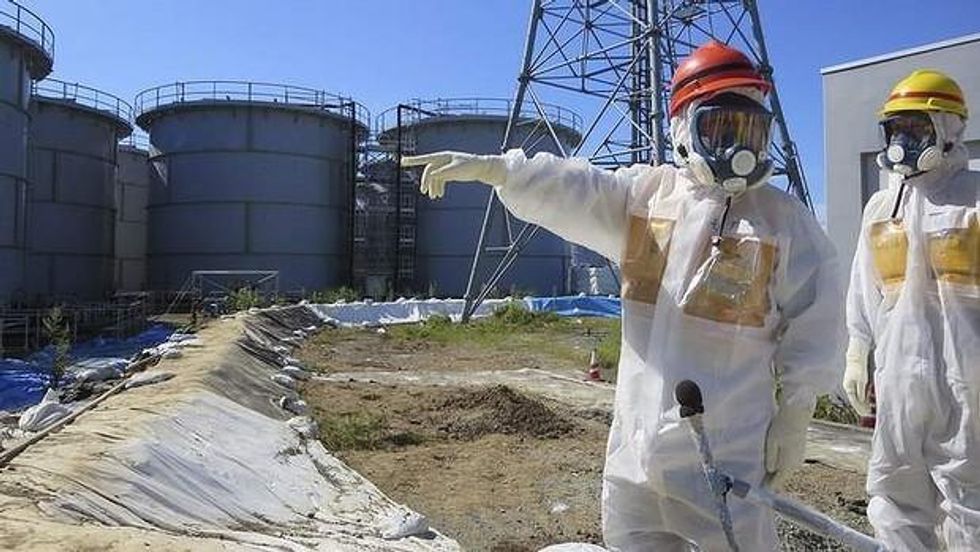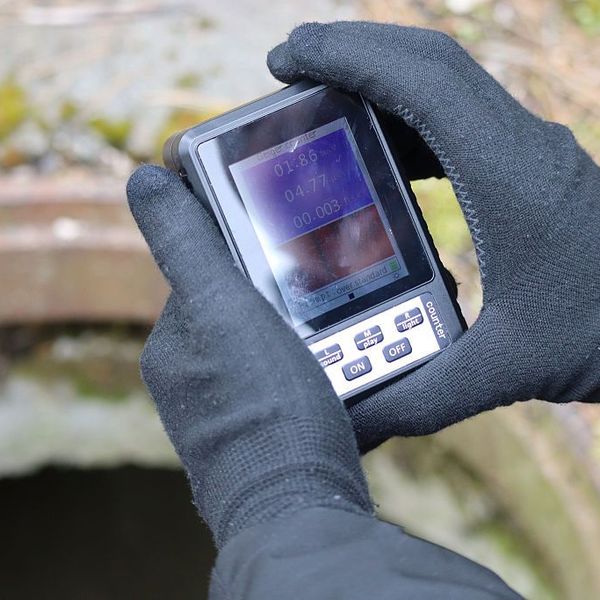TEPCO Blasted for Withholding Data as Fukushima Radiation Levels Soar
'This is not an appropriate way to deal with the desire of the public for transparency'

Five months ago, measurements taken by TEPCO showed surging levels of the highly radioactive strontium-90 at a groundwater well. However, despite requests from the country's Nuclear Regulation Authority (NRA) for all such data, TEPCO withheld that information until Wednesday.
"We did not hear about this figure when they detected it last September," Shinji Kinjo, NRA's taskforce on contaminated water issues at Fukushima, told Reuters. "We have been repeatedly pushing TEPCO to release strontium data since November. It should not take them this long to release this information."
"This is not an appropriate way to deal with the desire of the public (for transparency) and in particular, the regulator, which is now very closely regulating issues related to public health, the environment and so on," said Martin Schulz, a senior research fellow at the Fujitsu Research Institute.
Meanwhile, adding to this week's news, TEPCO also announced that samples taken from a separate groundwater well near the plant are now detecting a record 54,000 becquerels per liter of another radioactive substance, cesium.
This level more than doubles all previous records of cesium in groundwater near the plant, the last being 22,000 becquerels detected in a separate observation well in July 2013, The Japan Times reports.
In a separate bit of bad news Shanghai Daily reports that there may be a new leak at the site of the well containing cesium, which is located just 50 meters from the Pacific Ocean.
______________________
An Urgent Message From Our Co-Founder
Dear Common Dreams reader, The U.S. is on a fast track to authoritarianism like nothing I've ever seen. Meanwhile, corporate news outlets are utterly capitulating to Trump, twisting their coverage to avoid drawing his ire while lining up to stuff cash in his pockets. That's why I believe that Common Dreams is doing the best and most consequential reporting that we've ever done. Our small but mighty team is a progressive reporting powerhouse, covering the news every day that the corporate media never will. Our mission has always been simple: To inform. To inspire. And to ignite change for the common good. Now here's the key piece that I want all our readers to understand: None of this would be possible without your financial support. That's not just some fundraising cliche. It's the absolute and literal truth. We don't accept corporate advertising and never will. We don't have a paywall because we don't think people should be blocked from critical news based on their ability to pay. Everything we do is funded by the donations of readers like you. Will you donate now to help power the nonprofit, independent reporting of Common Dreams? Thank you for being a vital member of our community. Together, we can keep independent journalism alive when it’s needed most. - Craig Brown, Co-founder |
Jacob Chamberlain is a former staff writer for Common Dreams. He is the author of Migrant Justice in the Age of Removal. His website is www.jacobpchamberlain.com.

Five months ago, measurements taken by TEPCO showed surging levels of the highly radioactive strontium-90 at a groundwater well. However, despite requests from the country's Nuclear Regulation Authority (NRA) for all such data, TEPCO withheld that information until Wednesday.
"We did not hear about this figure when they detected it last September," Shinji Kinjo, NRA's taskforce on contaminated water issues at Fukushima, told Reuters. "We have been repeatedly pushing TEPCO to release strontium data since November. It should not take them this long to release this information."
"This is not an appropriate way to deal with the desire of the public (for transparency) and in particular, the regulator, which is now very closely regulating issues related to public health, the environment and so on," said Martin Schulz, a senior research fellow at the Fujitsu Research Institute.
Meanwhile, adding to this week's news, TEPCO also announced that samples taken from a separate groundwater well near the plant are now detecting a record 54,000 becquerels per liter of another radioactive substance, cesium.
This level more than doubles all previous records of cesium in groundwater near the plant, the last being 22,000 becquerels detected in a separate observation well in July 2013, The Japan Times reports.
In a separate bit of bad news Shanghai Daily reports that there may be a new leak at the site of the well containing cesium, which is located just 50 meters from the Pacific Ocean.
______________________
Jacob Chamberlain is a former staff writer for Common Dreams. He is the author of Migrant Justice in the Age of Removal. His website is www.jacobpchamberlain.com.

Five months ago, measurements taken by TEPCO showed surging levels of the highly radioactive strontium-90 at a groundwater well. However, despite requests from the country's Nuclear Regulation Authority (NRA) for all such data, TEPCO withheld that information until Wednesday.
"We did not hear about this figure when they detected it last September," Shinji Kinjo, NRA's taskforce on contaminated water issues at Fukushima, told Reuters. "We have been repeatedly pushing TEPCO to release strontium data since November. It should not take them this long to release this information."
"This is not an appropriate way to deal with the desire of the public (for transparency) and in particular, the regulator, which is now very closely regulating issues related to public health, the environment and so on," said Martin Schulz, a senior research fellow at the Fujitsu Research Institute.
Meanwhile, adding to this week's news, TEPCO also announced that samples taken from a separate groundwater well near the plant are now detecting a record 54,000 becquerels per liter of another radioactive substance, cesium.
This level more than doubles all previous records of cesium in groundwater near the plant, the last being 22,000 becquerels detected in a separate observation well in July 2013, The Japan Times reports.
In a separate bit of bad news Shanghai Daily reports that there may be a new leak at the site of the well containing cesium, which is located just 50 meters from the Pacific Ocean.
______________________

